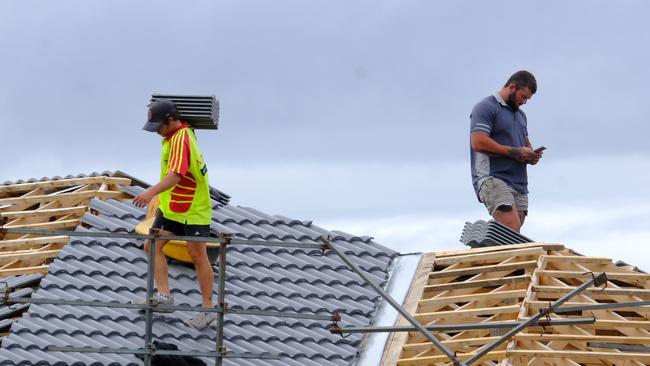Home building costs eclipse pre-pandemic prices by 40pc
The price of building a new house has soared more than 40 per cent in most states since the start of the pandemic, but conditions appear to be improving increases continue to mellow.

The price of building a new house has soared more than 40 per cent in most states since the start of the pandemic, but conditions appear to be improving as material costs mellow.
Analysis by land sales site OpenLot has found the short supply of labour and materials through the pandemic pushed the price of a new house 57 per cent higher in Queensland, the highest of any capital city compared with prices in early 2020.
Despite continued high demand for home building in Perth, Western Australia rose by 41.6 per cent, which was smaller than South Australia (up 43.1 per cent) and NSW (up 46.1 per cent). The smallest increase was in Victoria, which increased 38.2 per cent.
The silver lining for buyers and builders alike is the annual rise in construction costs moderated to single digits in 2024, after rising between 12 per cent and 21 per cent depending on the state in 2022 and 2023.
Housing Industry Association chief economist Tim Reardon said the market was slowly getting back to some level of price stability after spikes in the cost of land, labour and materials, the latter of which has risen 34.5 per cent from the end of 2019.
“The inefficiencies caused by the pandemic have now dispersed,” Mr Reardon said.
Building approvals fell to the lowest levels in a decade over the past 18 months.
Lower demand for products used at the start of a build, including structural timber and steel, has caused prices to moderate.
However, those needed to complete a home, such as plasterboard and paint, have continued to get more expensive.
National master planned communities developer Peet’s chief executive Brendan Gore said Queensland remained the toughest state to secure labour, while in Victoria and WA, tradies’ levels were still tight but “workable”.
While conditions had improved, he said construction was still more challenging than five years ago.
“Land is not cheap anymore. Getting it into production is getting more complex, time-consuming, expensive – and then all that flows into the shortage of supply to meet today’s demand,” Mr Gore said.
OpenLot analysis found the most expensive suburbs to build were both in Victoria, with the Mornington Peninsula suburb Point Nepean demanding an average cost of $1.219m and Glen Waverley-East typically costing $1.111m.
They were followed by the Queensland Sunshine Coast suburbs of Goldie Beach–Pelican Waters ($881,729) and North Kellyville in northwest suburban Sydney.
However, it is still possible to build for less than $300,000 in a handful of locations nationally.
OpenLot chief executive Qi Chen said many homeowners were proactively choosing to spend more now that property prices were up nationally by more than 40 per cent on pre-pandemic levels, according to PropTrack.
“When house prices go up in a suburb, people are willing to spend more to build a new house there,” he said.
The smaller new house construction pipeline has allowed builders to move through their backlog, resulting in build times normalising and contract pricing has become more competitive in some parts of the country.
Mr Reardon said these cost increases were now embedded, noting the Albanese Government’s changes to the National Construction Code have also pushed prices higher.







To join the conversation, please log in. Don't have an account? Register
Join the conversation, you are commenting as Logout